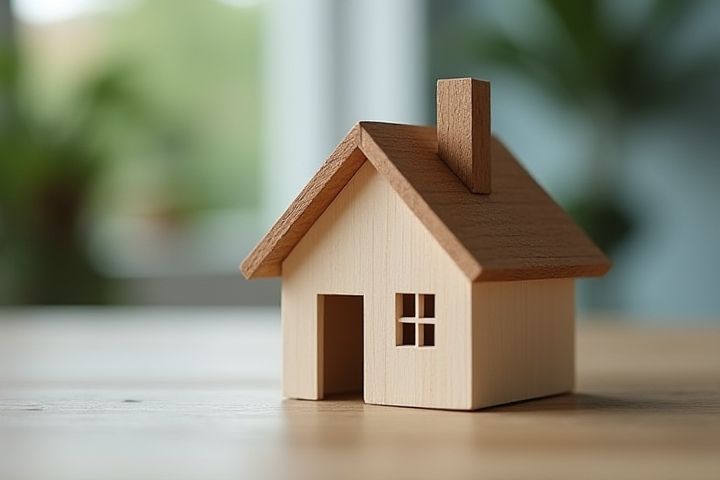
Homeowners insurance typically covers several crucial areas to protect your investment. Property damage due to fire, theft, or vandalism is often included, ensuring you're compensated for repairs or replacements. Liability protection is another essential feature, shielding you against legal claims if someone is injured on your property. Natural disasters, such as floods or earthquakes, may require separate endorsements or policies, as standard coverage often excludes these events. You should carefully assess your policy to ensure it meets your specific needs and geographic risks.
What To Insure A House Against
Fire
Insuring your house against fire damage involves obtaining a homeowner's insurance policy that specifically covers fire-related incidents. Look for coverage that includes property damage, which protects your dwelling, personal belongings, and any additional structures on your property such as garages or sheds. It's also wise to check if the policy offers replacement cost coverage, ensuring that you receive enough funds to rebuild your home to its current value. To further enhance your fire protection plan, consider installing smoke detectors, fire alarms, and a fire suppression system, which can sometimes lead to discounts on your insurance premium.
Theft
Homeowners should consider specific insurance coverage against theft to protect personal property effectively. A standard homeowner's policy often includes personal property coverage, which typically ranges between 50% to 70% of the home's insured value. For enhanced protection, riders or endorsements can be added, covering high-value items such as jewelry or electronics, usually up to $1,000 per item without additional coverage. To further safeguard your belongings, implementing security measures like a monitored alarm system can sometimes lower your insurance premium significantly.
Flood
Flood insurance is essential for homeowners in areas prone to heavy rainfall or rising water levels, protecting against damages that standard homeowners' policies typically do not cover. Approximately 20% of flood claims come from properties outside designated flood zones, highlighting the unpredictable nature of flooding. You should consider a separate flood insurance policy provided by the National Flood Insurance Program (NFIP) or private insurers, as these can cover the structure and personal belongings up to $250,000 and $100,000, respectively. Given that just one inch of floodwater can cause over $25,000 in damage, securing adequate coverage can safeguard your investment and provide peace of mind.
Earthquake
To insulate your house against earthquakes, consider purchasing earthquake insurance, which supplements standard homeowners policies. This coverage typically includes damage to the structure, personal belongings, and additional living expenses if you need temporary housing. You might also want to reinforce your home's foundation and walls, installing steel braces or shear walls to improve stability. Furthermore, secure heavy furniture and appliances to minimize the risk of injury and property damage during seismic events.
Storms
When insuring your house against storms, consider comprehensive coverage that includes damage from high winds, hail, and flooding. The Insurance Information Institute indicates that roughly 70% of home insurance policies cover wind and hail damage; however, flood insurance often requires a separate policy since it's not included. Ensure your deductible aligns with your financial situation; typical deductibles for storm-related claims range from 1% to 5% of your home's insured value. Reviewing and updating your policy regularly can help you stay protected against potential storm-related losses as climate patterns evolve.
Vandalism
Homeowners in the United States experienced an average of 1.6 million property crimes in 2020, with vandalism amounting to approximately 14% of those incidents. To protect your home against vandalism, consider specific coverage options like property damage, which can safeguard against graffiti, broken windows, and defaced structures. You may also look into adding a rider for personal property, ensuring items like outdoor furniture or art are covered if damaged. Investing in comprehensive home insurance with a focus on vandalism can provide peace of mind while maintaining your property's value.
Loss of use
Loss of use insurance covers additional living expenses when your home becomes uninhabitable due to a covered peril, such as fire or severe weather. This coverage typically includes costs for temporary accommodations, meals, and other necessary living expenses while repairs are underway. It's essential to evaluate your policy for specific coverage limits--often set at a certain percentage of your dwelling coverage, commonly 20% to 30%. Understanding these limits can help you ensure your family's financial stability during unexpected disruptions.
Liability
Homeowners insurance typically includes liability coverage, which protects you from financial loss due to injuries or damage to others on your property. This coverage generally ranges from $100,000 to $500,000, but you can increase your limits based on your personal needs and the value of your assets. Liability insurance also covers legal fees if you face lawsuits stemming from accidents or injuries that occur at your home. Ensuring you have sufficient liability coverage can safeguard your financial future against potential claims.
Water damage
When insuring your house against water damage, consider a policy that specifically covers flood insurance, as standard homeowners' insurance often excludes this peril. Statistics reveal that around 90% of natural disasters involve flooding, making it a significant risk for homeowners. Look for coverage that includes sudden and accidental discharge from plumbing systems, as well as damage caused by roof leaks or insufficient drainage. It's crucial to review your policy's exclusions and limits, ensuring they adequately protect your investment and meet local regulations.
Structural damage
When insuring your house against structural damage, it's essential to consider coverage options like dwelling coverage, which protects the physical structure against perils such as fire, windstorms, and hail. Ensure your policy includes replacement cost coverage, which helps pay for repairs or rebuilding at current market rates, rather than depreciated values. It's also wise to look into sewer backup and flood insurance, as standard homeowner policies often exclude these risks, potentially leading to significant out-of-pocket expenses. Regularly reassessing your coverage limits is crucial; for instance, if you previously insured your home for $300,000, but recent renovations raised its value to $400,000, make adjustments to ensure adequate protection.
